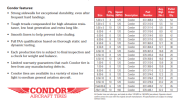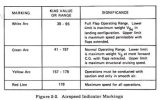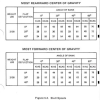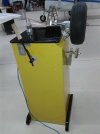I understand a dynavibe balancer can be used to balance wheels and tires? I have one. Just need a spinner.
What did you use to locate the heavy part of the wheel/tire?
It can be done on the plane I think? I have large spinner for truck tires but it is 3 phase power which I don't have at the airport.
Any thoughts?
That dynavibe looks to be no more than a fancy static balancer. A true dynamic balancer spins the wheel on a shaft that is free to move a little, and sensors pick up both static inbalance (up-and-down movement) and dynamic imbalance (wobble). The dynavibe tests the wheel on the airplane's axle, which isn't going to let it wobble is any fashion so as to measure it.
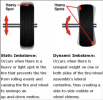
To find the amount and location of shimmy-causing dynamic imbalance, the wheel must be spun, and the deflection location and degree must be found, then weights are attached to the wheel to balance those heavy spots.
My balancer was based on one of the earliest dynamic imbalancers from the 1950s. The wheel rides on a shaft, with machined aluminum cones centering the wheel on the shaft, and the shaft rides in low-friction ball bearings in an aluminum block that mounts to another shaft at 45° to the wheel shaft. That angled shaft sits in two more ball bearings inside the cabinet. The axis of the angled shaft intersects with the plane of inner bead seat of the wheel at the axis of the wheel shaft centerline. Any imbalance in that plane of the wheel will not wobble the shaft, but anything outboard of it will. The angled shaft drives a needle on a scale that shows the amount of outboard imbalance, and a precisely machined aluminum drum on the inboard end of the wheel shaft, positioned next to a fixed rest, shows the location of the imbalance. You use a fine-point Jiffy marker, resting on that rest, and advance it until the spinning drum touches it. The black mark on the drum is 180° to the heavy spot, so stop the wheel, position the black mark up, and attach weight to the inside of the outer bead seat area. Stick-on weights, on a thoroughly cleaned surface. Now we have to remove the imbalance on the inside of the wheel, so we let the wheel rotate on its own in those low-friction bearings and when it stops, the heavy spot is down. Attach weight to the inside if the inner bead seat at the top, enough so that the wheel will stay in an position you put it. This weight will not change the balance of the outboard sections of the wheel.
The wheel is spun for the outboard balancing by a small wheel driven by a small motor inside the cabinet. Moveing the lever puts that wheel against the tire to spin it up. It doesn't have to turn all that fast, either. Let the drive wheel fall off, turn off the motor, letting the wheel coast so you can read the needle and mark the drum.
It takes time, much more time than a modern electronic balancer takes, but I could afford this one. It's much more complicated to operate than the modern machines, so you have to think some, but it stopped destructive nosewheel shimmy so it was worth it.

